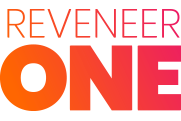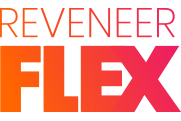Most business leaders today, particularly those heading up venture-backed startups or bootstrapped businesses, are looking to preserve capital. None of us is sure how long this environment will last, and we may need to extend our cash reserves to be able to bridge to a point when we have more clarity.
If you spend any time scrolling Linkedin these days, you will likely come across more than one post by an SDR, or marketing person, recently laid off from their job. In many cases, it appears that the first to go have been sales and marketing professionals at seemingly well-funded technology startups.
I can see the logic. Like everyone else, our prospective customers are uncertain about how long the pandemic will wreak havoc on technology ecosystems, so they are delaying purchasing decisions. Without buyers, it seems an unnecessary operating expense to be investing in demand generation, whether inbound digital marketing campaigns funded by marketing, or outbound lead generation performed by our SDR teams.
It got me thinking. Does scaling back these activities make sense as a strategy to preserve capital?
As it turns out, the answer is ‘no’. The numbers just don’t add up.
I analyzed and compared what it would look like to (1) continue to run a fully-ramped 4-person, outbound SDR operation for the next four quarters under business-as-usual conditions, (2) to pause that operation for the next one quarter and then restart, and (3) to pause that operation for the next two quarters, and then restart.
No matter how you slice it, you always come out ahead by maintaining the operation. In fact, with pausing the operation, net capital is actually lost over the period (and I did not account for the added cost of recruiting, training, and ramping a new team once the pause is over).
Here are the comparisons…
Now, I realize it is hard to generalize the various operating parameters across the myriad SDR operations that are out there. So, I chose a set of parameters that, in my experience leading an organization that manages over 40 different SDR teams on behalf of our customers, represents the ‘sweet spot’ for SaaS applications. The conversion rates used are an aggregation of actual conversion rates gathered over hundreds of thousands of outbound dials per year for many different SaaS applications.
Here is the profile of the outbound model that I used…
Many of you may consider my fully burdened cost of an SDR to be high, but it actually represents the true cost to an organization of someone making about $50K base with a $65K OTE. If it is high compared to your costs, that makes the model and conclusions even more conservative.
No matter how you change the parameters in the models, the capital lost increases as SDR operations are put on hold, or ‘paused’. In addition, the CAC goes up, as do the CAC ratios.
The reasons for this are simple and will make sense to anyone involved in building and managing SDR operations selling SaaS solutions. All of the economics of these models is based on the premise that the operation will operate, for most SaaS solutions, on a breakeven basis annually, or generate 1x-2x or higher in bookings than it cost to operate the function over a 12 month period (with the true return realized over the LTV). If you unplug the operation to avoid the OpEx, you are losing new customer acquisition that at a minimum would generate enough capital to cover the cost over four quarters.
Sometimes, in response to analysis like this, I will hear leaders say that they are at an early-stage, and have not yet achieved repeatable customer acquisition from their SDR operation. So they are not yet getting a return for the OpEx they spend. To that I say, then now is the time to be doubling your efforts on new customer acquisition, to build pipeline for the future. To pause now, when you do not have repeatable results, is to almost guarantee that you will have virtually no sales at all in the next 2, 3 or 4 quarters.
Before you decide to pause your lead generation activities to save cost, I recommend running an analysis like this based on your own unique set of parameters. Saving OpEx can feel good initially, but when it comes to SDR operations, unlike other parts of the business, it rarely makes sense.



